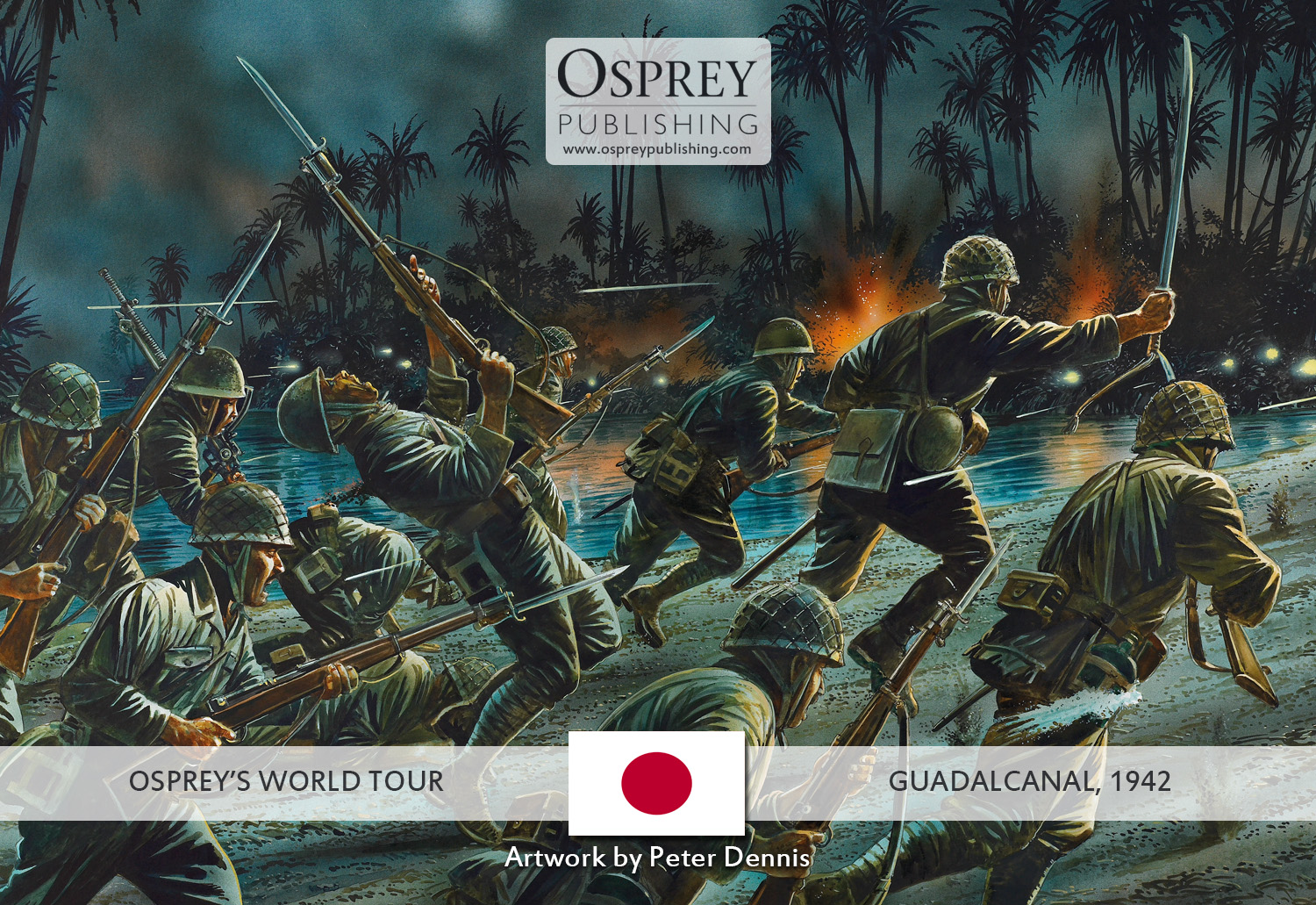Osprey's World Tour sees us delving into our extensive backlist of books as we explore the globe through military history.
Today in Osprey's World Tour we are heading to Japan, with a stunning illustration taken from the recently released Campaign 284: Guadalcanal 1942-43. It shows the Ichiki detachment charging towards the US Marines, confident that a night-time bayonet charge would defeat their enemy.
The Attack of the Ichiki Detachment
Extract taken from Campaign 284: Guadalcanal 1942–43 by Marke Stille
During the night of August 21, the Japanese made their first attempt to rout the American forces on Guadalcanal. The unit assigned to perform the mission was the 2nd Battalion, 28th Infantry Regiment, which had a long battle history. The Japanese were sure that a night bayonet charge would do the trick. Here Japanese infantry of the 2nd Company make a charge across the sandbar at the mouth of Alligator Creek. The Japanese officer is leading the way with a sword and most of his men are carrying the standard IJA infantry rifle, the 6.5mm Arisaka Type 38. One man is carrying the standard squad light machine gun, the 6.5mm Type 96 with its 30-round box magazine. The Marine defenders were entrenched on the other side of Alligator Creek. Muzzle flashes are evident from Marine lines, including those of .30-caliber machine guns and a 37mm antitank gun firing anti-personnel canister rounds. No doubt, to the shock of the 2nd Company and Ichiki himself, the untested Marines did not wince in the face of the screaming Japanese and delivered withering fire, which brought them to a stop only 30 yards in front of the Marine positions. This pattern was repeated throughout the night when other men of the Ichiki Detachment charged Marine lines and, later in the campaign, on a number of occasions when the Japanese still believed that night attacks would be successful in the face of Marine firepower.
Further Reading
If you would like to read more about Japanese military history then take a look at the books below - a small selection of Osprey's extensive range.
Essential Histories 31: The Russo-Japanese War 1904–1905
Fortress 5: Japanese Castles 1540–1640
Elite 169: World War II Japanese Tank Tactics
New Vanguard 180: Kamikaze: Japanese Special Attack Weapons 1944–45
Campaign 170: Osaka 1715
Does Japanese military history fascinate you? Let us know what you find most interesting in the comments section below.


Comments
You must be logged in to comment on this post. Click here to log in.
Submit your comment